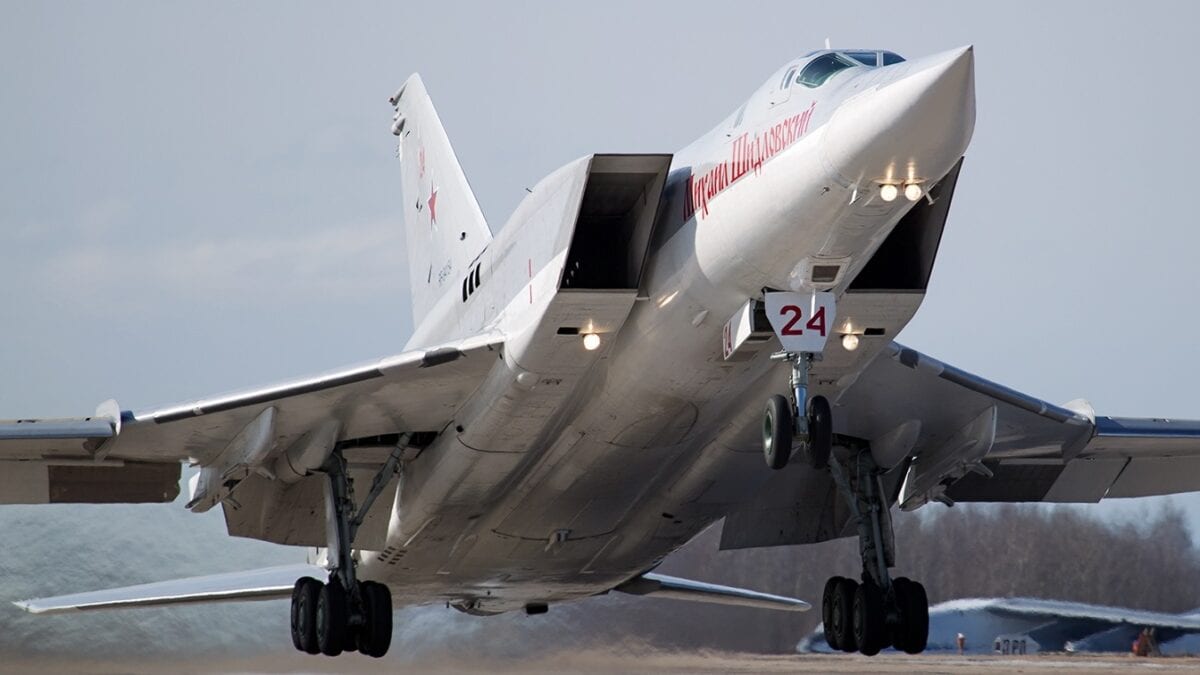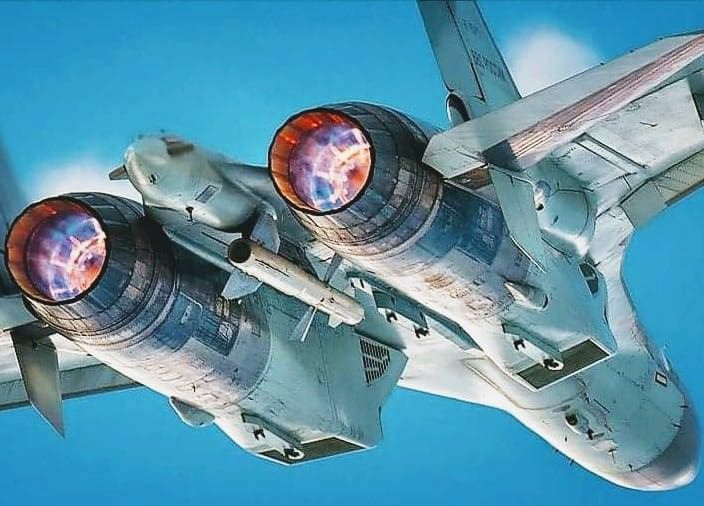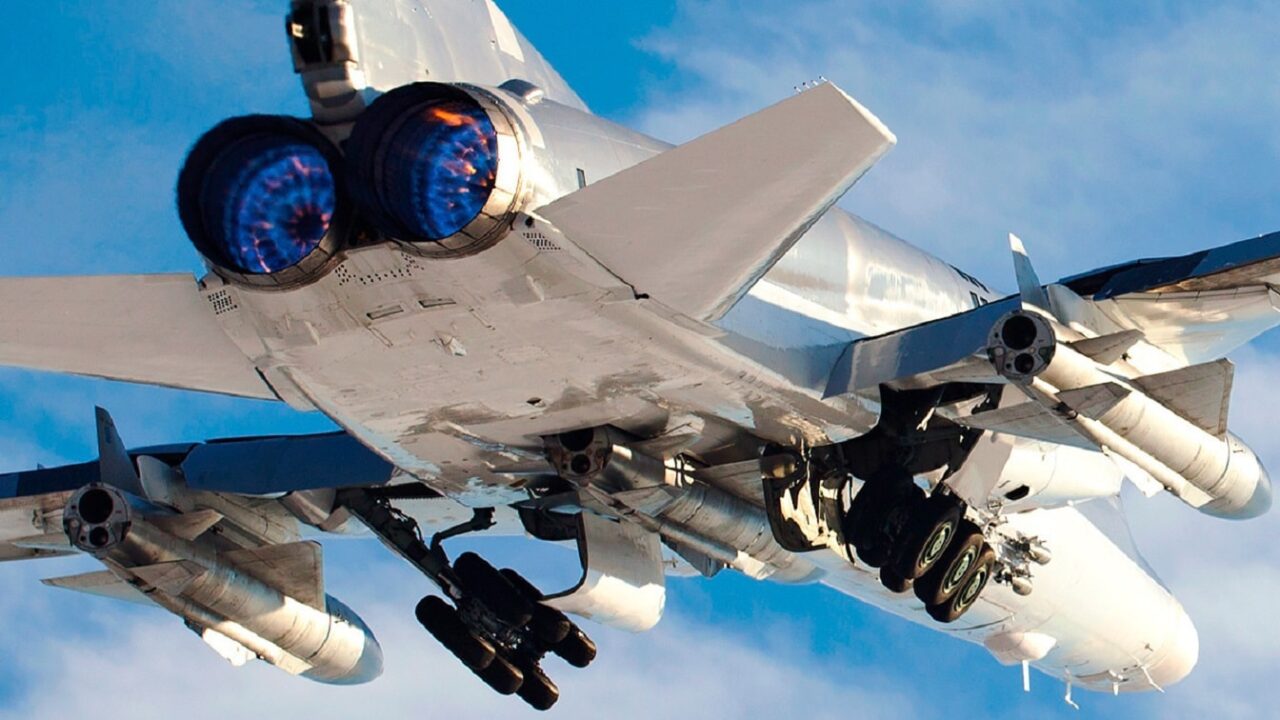The Need for SEAD: How Will Russia’s Air Force Deal With Ukraine’s Air Defenses?: In the opening weeks of 2021, Moscow has massed extensive ground forces near Ukraine and is making what analysts fear are genuine threats of military action against Kyiv unless NATO and Washington concede to its demands. And unlike Russia’s actions in Eastern Ukraine in 2014-2015, an attack in 2022 is likely to involve full employment of Russian combat aviation and tactical ballistic missile systems to ravage targets across Ukraine.
However, Russian air and missile strikes would need to overcome Kyiv’s Soviet-era ground-based air defenses effective against high-flying aircraft. As detailed in this earlier article, these predominantly consist of old S-300PS/PT and Buk-M1 long- and medium-range surface-to-air missile systems (SAMs) effective out to 56 and 22 miles respectively, and missile-armed 9K33M3 Osa vehicles for local area defense (range 9 miles) of ground forces.
Ukrainian ground forces also deploy numerous low-altitude defenses including man-portable Strela missiles, and ZSU-23-4 Shilka, and 9K35 vehicles that particularly threaten helicopters and smaller drones. Those are important, but Russian warplanes can fly above their engagement range and drop precision munitions or bombs with reduced accuracy, as done in Syria’s civil war.
Despite its datedness, Ukraine’s Integrated Air Defense System (IADS) is large—counting in the low-to-mid hundreds of short- and medium-range systems—and could still inflict significant losses if Russian forces don’t systematically mount a Suppression of Enemy Air Defense (SEAD) campaign. Russia would also require extremely thorough SEAD operations in any attempt to insert elite mechanized airborne formations behind the frontline to avoid losses of transport aircraft full of paratroopers.
The cornerstone of SEAD tactics involves luring air defense systems into activating their radars and then targeting those radars with anti-radiation missiles (ARMs) that home in on radar emissions. Because radar-homing missiles have small radar signatures and their passive seekers don’t emit a signal of their own they can be difficult to detect until too late. Furthermore, modern ARMs like the Kh-31 typically can head to the last known position of an emitter, forcing air defense operators to both shut down their radar and move promptly to ensure survival. Once the radars are destroyed or forced to deactivate, surface-to-air missile launchers are left blind and ineffectual.
Russia’s military is aware of the need for SEAD, and fields a variety of missiles for the mission and trains on their employment. However, neither Russia nor the Soviet Union ever conducted a SEAD operation comparable to U.S. and Israeli campaigns neutralizing IADS in the Middle East.
In the five-day Russo-Georgia war in 2008, Russian Tu-22M and Su-34 bombers belatedly employed Kh-58 ARMs against Georgian radars. But Georgian air defenses still shot down two or three Russian combat aircraft, including a high-flying Tu-22MR reconnaissance plane, while three or four more Russian warplanes were mistakenly downed by Russian forces due to poor Identity-Friend-or-Foe systems and airspace management.

Tupolev Tu-22M3 taking off at Ryazan Dyagilevo.
Russia’s military has improved substantially since 2008, but how much better could it perform facing Ukraine’s more extensive air defenses?
Leonid Nersisyan, a defense analyst with expertise related to Russian military aviation, wrote to me in an email: “Russia made a serious step forward in air warfare and SEAD capabilities particularly after the August 2008 war in Georgia. This includes procurements of hundreds of new combat aircraft (most of them are 4+ generation fighters and frontline bombers), modernization of older aircraft (for example, Su-25 to Su-25SM3), and procurement of precision-guided airborne munitions. At the same time, there is a lack of real combat experience in conducting SEAD operations, if we are talking about the hypothetical full-scale war between Russian and Ukraine.”
Russian SEAD Tactics
Tom Cooper, a military aviation historian and author of a book on Russian combat aviation in Syria, wrote to me that Russia’s tactical (“frontal”) aviation is seen principally as an enabler of Russian ground forces. Thus, he believes SEAD attacks would simply be integrated to enable specific missions.
“In the West, we think something like, ‘first we win air superiority, destroy the enemy air defenses and air forces, then we do everything else’. The Russians do not think that way… Operationally, [Russian air force] units are subjected to the local Military District commands, all of which are dominated by commanders of ground forces. Therefore, it’s out of the question for the VKS to run something like ‘its own air war’…their tactical manual dictates no separate SEAD operations: instead, either two or all four in the leading zveno (four-ship flight) of aircraft of every squadron, is armed with ARMs, and targeting enemy air defenses.”
Though skeptical Russia would commit to war with Ukraine, he continued: “If this would be an all-out effort…then they would operate in waves of regiment-sized formations. Say three waves a day, each consisting of 3-4 regiments, and every wave would start with a regiment-sized SEAD effort including Tu-160s, Tu-95s, and Tu-22M [strategic bombers] using cruise missiles, and Su-34s for Kh-58 [anti-radiation] missiles.”
Cooper doubted Russia would employ its Su-30SM or Su-35S multi-role Flanker fighters in a SEAD role, as he believes these would need to be dedicated to interceptor/air-superiority missions.

Su-35. Image Credit: Creative Commons.
Platforms and Systems
Fixed radar installations and missile batteries such as Ukraine’s S-125 Pechora batteries may be targeted with Kh-555 or Kh-101 cruise missiles launched by Russian Tu-95 or Tu-160 strategic bombers, or land-based Iskander ballistic missiles and Novator cruise missiles. Furthermore, Iskander missiles may be equipped with non-nuclear electromagnetic pulse warhead to knock out enemy radars.
But Ukraine’s mobile SAM systems and Pelican and Phoenix surveillance radars may compel Russia to dip into its varied stockpiles of anti-radiation missiles.
The most advanced is the Kh-31P (AS-17 Krypton) which accelerates to Mach 2 using a rocket booster, then sustains high speed using a ramjet engine, making it highly difficult to shoot down. Originally developed to home in on the radars of NATO I-Hawk and Patriot missile batteries from 70 miles away, the latest 1,570-lb Kh-31PD variant features a heavier 242-lb cluster munition, range extended to 155 miles, and an L-130 broadband (1.2-11 GHz) seeker to replace the three seeker-types of earlier models.
Russian Su-24M or Su-34 bombers may also use older Kh-58U ARMs (NATO codename AS-11 Kilter) with a range of 155 miles and Mach 3.6 supersonic cruise. Russian Tu-22M and Tu-160 bombers theoretically could also employ the Kh-15P anti-radiation air-launched ballistic missiles (range 170 miles), but it’s not clear whether those remain in service.
Tactical aircraft may instead use the lighter, shorter-range Kh-25MPU (AS-12 Kegler) anti-radiation missile with a range of 25 or 37 miles that arcs up and then dives at low supersonic speeds (Mach 1.3). The lighter 694-pound ARM may be mixed in with a conventional strike payload and used reactively against short-range and tactical air defense systems like the 9K35 or ZSU-23-4 Shilkam should they emerge as a threat.
Russian ground forces may also employ potent electronic warfare systems, notably the Krasukha-4 (“Belladonna”) consisting of two 8×8 trucks. Principally aimed at blinding surveillance/reconnaissance aircraft and satellites, and disabling drones (such as Ukraine’s Bayraktar combat drones) from up to 186 miles away, they may also be used to blind ground-based radars, helping pave the way for aviation operations.
Altogether, Russian aviation and ground forces dispose of multiple methods to blind or destroy air defense radars. However, how well those capabilities would be used in a coordinated and systematic fashion to mitigate losses remains to be seen.
It’s worth bearing in mind that ground-based air defense commanders have agency too and may subvert technically superior adversaries by constantly re-positioning and concealing radars and launchers, conducting surprise ambushes under maximum range, and making smart use of intelligence. That’s how in 1999 a Serbian commander using a 1960s-era S-125 missile shot down an F-117 Nighthawk, the only manned stealth aircraft lost to enemy fire.
Still, Nersisyan wrote me: “The massive usage of new and modernized combat aircraft (Su-30SM, Su-35S, Su-34, Su-25SM3, etc.) carrying anti-radiation missiles (Kh-58, Kh-31) and precision-guided missiles along with usage of land-bases tactical missiles (Iskander-M) and a combination of artillery and ISR UAVs [surveillance drones], will allow Russian forces to effectively suppress the Ukrainian air defense, especially the longer-range systems which are less mobile (like S-300PS). The lack of experience may bring additional casualties, but the final result is not a matter of questioning.”
Sébastien Roblin writes on the technical, historical, and political aspects of international security and conflict for publications including the 19FortyFive, The National Interest, NBC News, Forbes.com, and War is Boring. He holds a Master’s degree from Georgetown University and served with the Peace Corps in China. You can follow his articles on Twitter.

